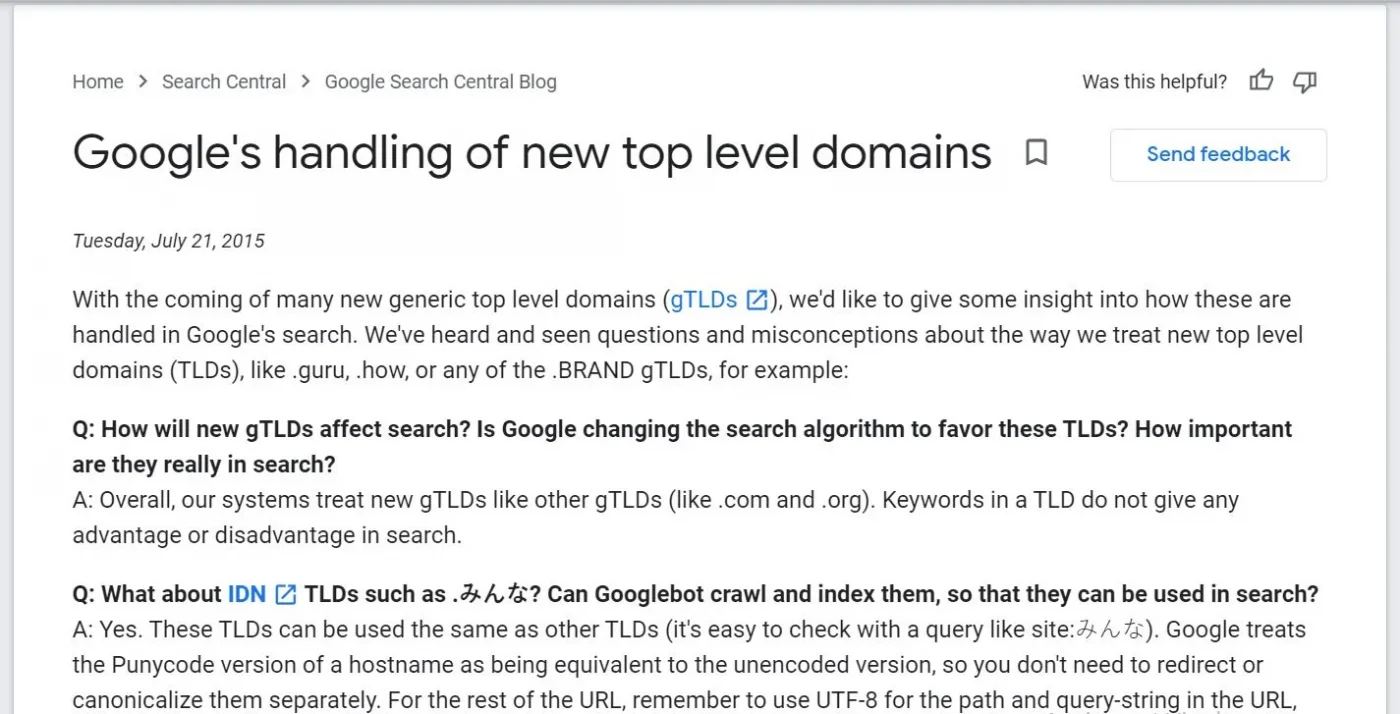You will learn how to Choose a Domain Name that Gets Results.
So, you are probably brainstorming some hot ideas about possible brand names for your new or existing venture. You have already visited a domain registrar, typed in “mybrand.com”, and boom… thumbs down. Not available!
Then, you are tempted to using numbers or hyphen combinations to blend it into a “.com” or “.org” domain extension. Because, you probably have heard the common misconceptions that only businesses with the “.com” extensions are genuine.
Well, Google treats all domain extensions the same as revealed in their 2015 publication. You won’t get penalized if you don’t have a .com at the end of your domain name. And there are many big brands today without the old TLDs “.com”, “.org.”

So, all TLDs are treated the same in search. Google appears to have no intention to alter its search algorithm in favor of one TLD over another.
However, there are only one-way domain extensions may have an effect on search results and that’s when it comes to geotargeting. This has to do with Country-code TLDs (ccTLDs) that represent specific geographic locations. The country code, “.gn” represents Nigeria, “.mx” represents Mexico, and “.eu” the European Union, etc. So Google considers these more relevant to local searches.
Also, people’s familiarity with “.com” makes it one of the first suggestions that pop up in our heads while searching for a business website online. But, this will level out itself once you have worked on your brand marketing properly.
Now, let’s dive into the major subject of this article. By the end of this article, you will be equipped with the best practices for choosing the perfect domain name for your brand(s).
So, stick with me to the end.
Table of Contents
What is a Domain name and Domain Extensions?
Basically, you have two things to choose when it comes to your business website domain.
One is the domain name, the other is the choice of top-level-domain (popularly known as domain extensions).
The top–level domain (TLD) is the part of the domain name located to the right of the dot (“ . “), such as “.store”. The domain itself is the name to the left of the dot. Note that the domain name does not always have to match exactly the name of your business or brand, although that’s generally regarded as a better option from a marketing viewpoint.
How to Choose a Domain Name that Gets Results:
- Keep it as short as possible.
- Choose a domain name that is readable and easy to type.
- Use keywords that are easy to relate to your brand.
- Target your area.
- Avoid numbers and hyphens.
- Be memorable.
- Research it.
- Choose a domain name extension that fits.
- Protect and build your brand.
- Act fast.
The Rise of New Domain Extensions
Beginning in 2013, ICANN (the organization that oversees domain extension creation) attempted to address this problem by drafting guidelines for the creation of new domain extensions. It became possible to have not just a .com or .net extension, but a .tech, .site, .online, or anything else.
Today, just over 1,500 domain extensions exist. (You can view the whole list here.) You can now register a domain name related to geographic areas, industries, interests, and specific services. This makes the internet much more organized, helping both people and search engines understand exactly what a site is about.
Conclusions
The expansion of domain extensions means that it’s easier than ever to get a highly customized domain name that’s perfectly suited to your brand.
Since it’s very difficult to find an SEO friendly domain name in the “.com” or “.org” extensions, you have the advantage of a less crowded domain extension that’s SEO optimized. Take advantage of other optimized options that you can easily brand rather than trying to enforce your domain name in the “.com” extension with hyphens and number combinations.


